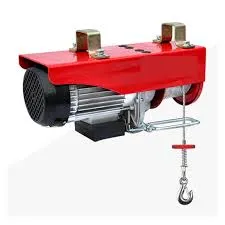


Fall Restraint Equipment Ensuring Safety in High-Risk Environments
In various industries such as construction, manufacturing, and maintenance, the safety of workers is paramount. One of the significant hazards faced by employees in these sectors is the risk of falls from heights. To mitigate this risk, fall restraint equipment has become an essential component of workplace safety protocols. This equipment is designed to prevent workers from falling, ensuring that they remain within a controlled and safe area while performing their tasks.
Understanding Fall Restraint Systems
Fall restraint systems are designed to limit the movement of personnel when they are working at heights. Unlike fall arrest systems, which are intended to catch an individual after a fall has occurred, fall restraint systems serve a preemptive function, effectively preventing the fall from happening in the first place. The key components of a fall restraint system typically include harnesses, lanyards, and anchor points.
1. Harnesses These are worn by workers and are designed to distribute the forces from a fall over the body, but in fall restraint scenarios, they primarily serve to secure the worker in a safe position. It is crucial that the harness is appropriately fitted, as an improper fit can lead to discomfort or malfunctioning in the event of a fall.
2. Lanyards These are the connecting elements that attach the harness to anchor points. For fall restraint, lanyards must be of a length that allows the worker to operate safely without compromising their position. It is essential to use lanyards that are specifically rated for fall restraint activities, as improper equipment can lead to dangerous situations.

3. Anchor Points A secure anchor point is critical for the effectiveness of a fall restraint system. These points should be located where the worker can safely move and are often installed at strategic locations on roofs, scaffolding, or other elevated work sites. The integrity and strength of anchor points should be rigorously tested to withstand potential forces in case of sudden movements.
Importance of Proper Training and Compliance
While the equipment itself is vital for safety, adequate training on the use of fall restraint equipment is equally important. Workers must be educated about the correct way to don harnesses, the function of lanyards, and the identification of secure anchor points. Regular training ensures that employees are not only familiar with the equipment but also understand the importance of adhering to safety protocols.
In addition, compliance with regulations set forth by organizations such as OSHA (Occupational Safety and Health Administration) is critical. These regulations provide guidelines on the implementation and use of fall protection measures, emphasizing the necessity for employers to maintain safe working conditions.
Conclusion
In conclusion, fall restraint equipment plays a pivotal role in safeguarding workers operating at heights. By preventing falls before they occur, these systems significantly reduce the risk of injuries and fatalities in high-risk environments. The proper use of fall restraint equipment, combined with comprehensive training and adherence to safety standards, creates a safer workplace for everyone involved. As industries continue to evolve and more workers take to the skies in their daily tasks, ensuring that the right fall protection measures are in place is not just a legal obligation but a moral imperative. Through vigilance and commitment to safety practices, we can protect the most valuable asset of any organization its workers.



